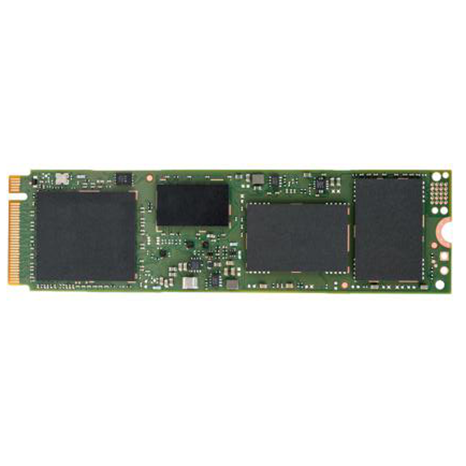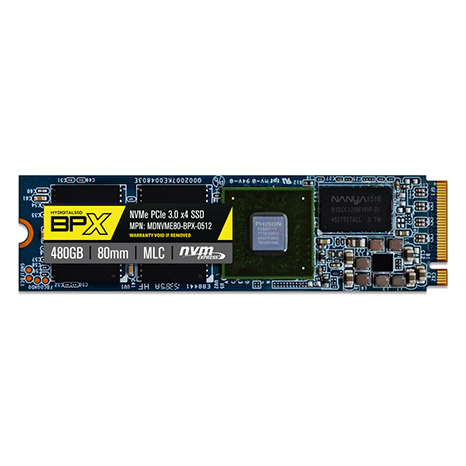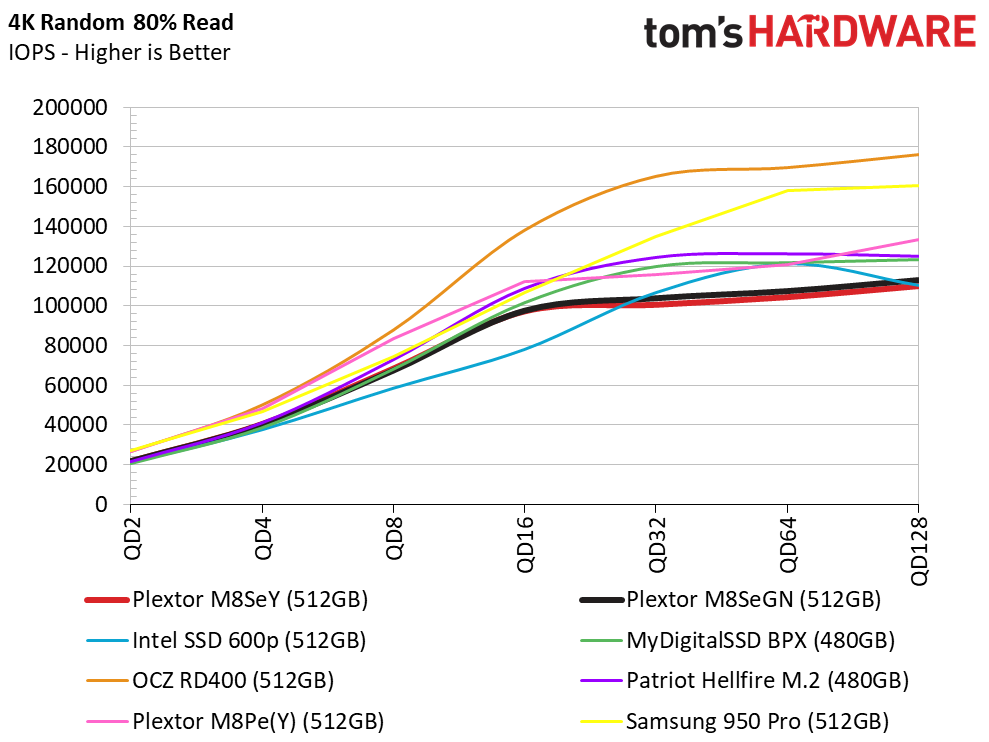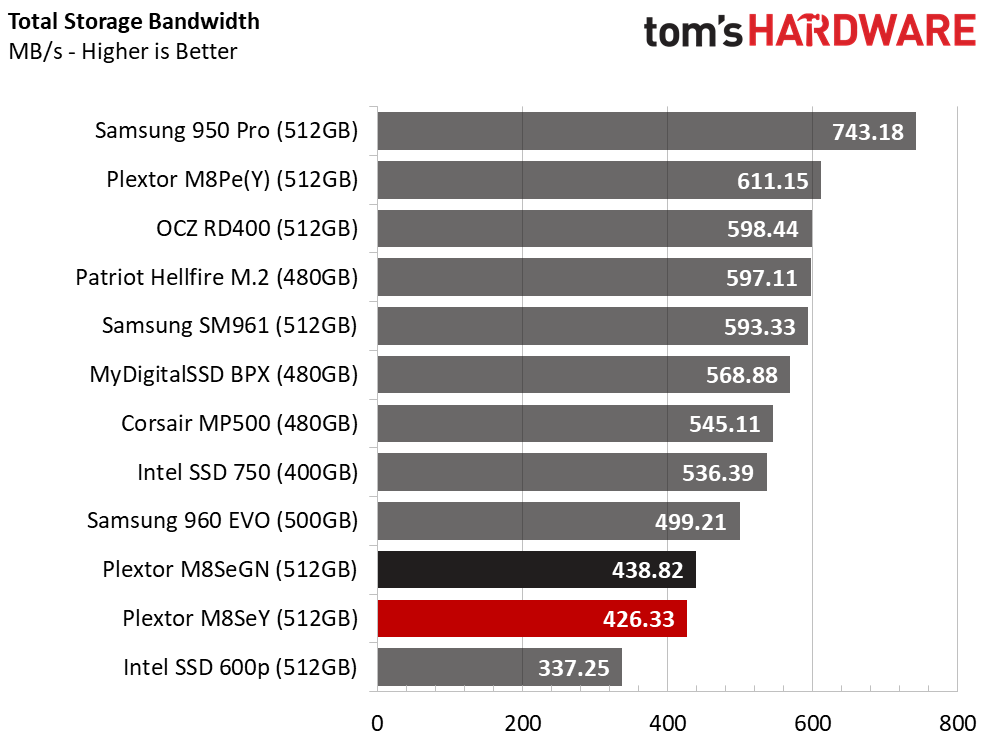Plextor M8Se NVMe SSD Review
Why you can trust Tom's Hardware
512GB NVMe SSD Performance
Comparison Products
The 512GB-class allows us to get down to business. More products ship in this capacity so we can see how the Marvell 88SS1093 and TLC combination fares compared to other products with planar and 3D NAND.
There are a few standout products in this capacity. Samsung never released a larger drive from the 950 Pro series. It has the best read latency of the modern consumer NVMe SSDs, but we think the MyDigitalSSD BPX 480GB is the best bang for the buck on the market. Like the 950 Pro, MyDigitalSSD didn't bring it to market in a larger capacity. Both drives feature MLC NAND. The Plextor M8Pe, Patriot Hellfire M.2 (another Phison E7-based drive), and OCZ RD400 round out the MLC SSD entrants.
The Intel 600p 512GB with an SMI SM2260 controller is the only other TLC-based product in the test pool. It uses Intel's first-generation 3D TLC NAND.
Sequential Read Performance
To read about our storage tests in-depth, please check out How We Test HDDs And SSDs. We cover four-corner testing on page six of our How We Test guide.

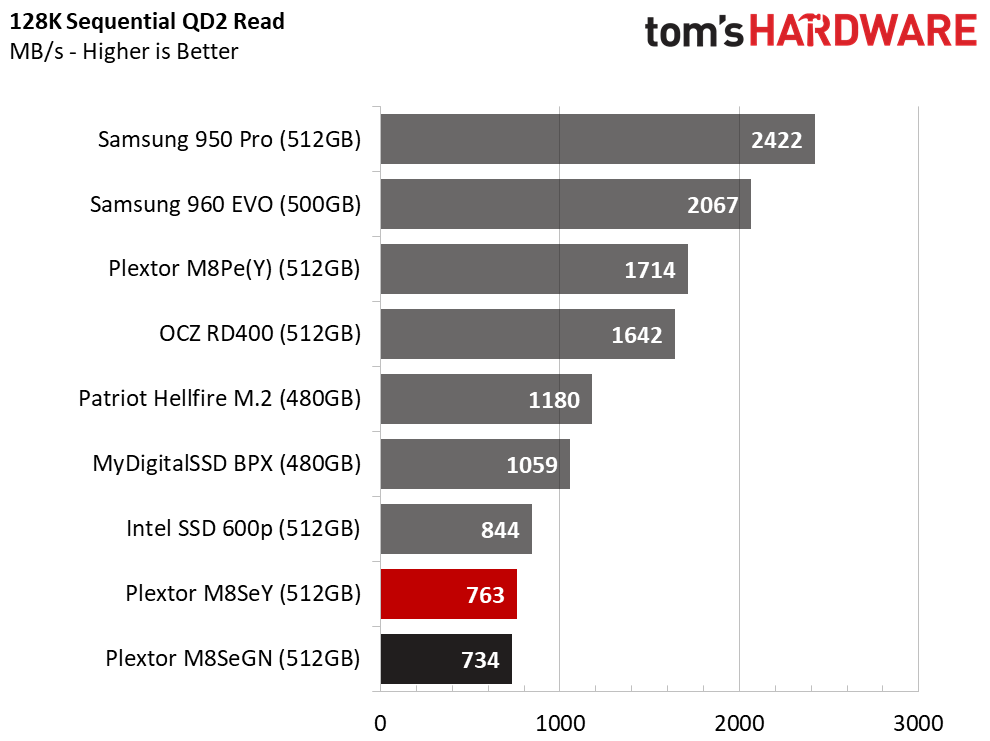
On paper, the Plextor M8Se 512GB has the same performance as the 1TB model, but many of the other products have lower specifications than their larger counterparts. We may find the 512GB is more competitive, but the first test result doesn't give us much hope.
The sequential read performance is nearly identical to the Intel 600p 512GB we tested a few months back. The 600p delivers a little more bandwidth at QD2. Gamers should keep that in mind.
Sequential Write Performance

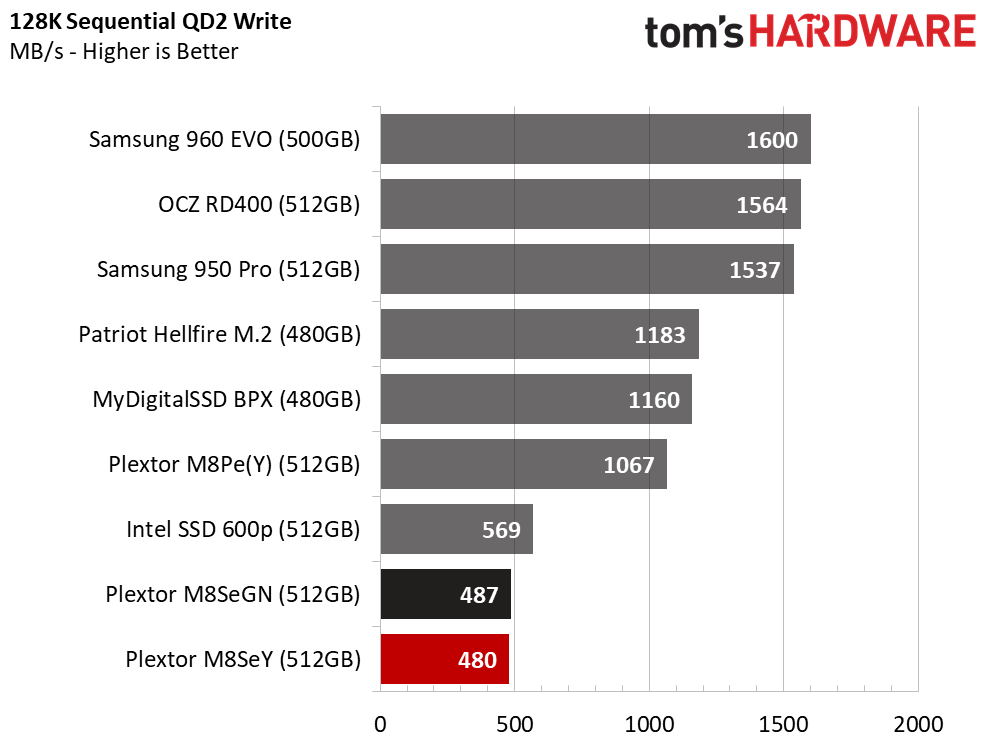
The Intel 600p also delivers a little more sequential write throughput than the two M8Se SSDs. Again, the M8Se trails the other drives even though it carries a price premium.
Get Tom's Hardware's best news and in-depth reviews, straight to your inbox.
Random Read Performance


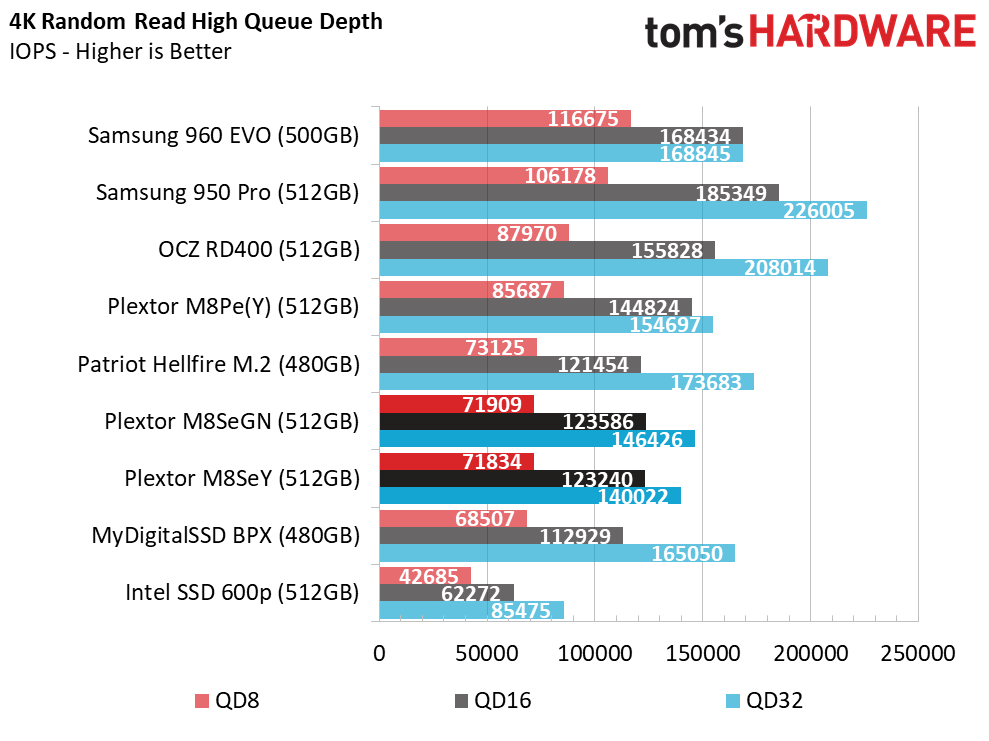
True to the specification sheet, the M8Se 512GB provides higher performance than the 1TB model. Both capacities knock on the 10,000 IOPS door at QD1. That's more than nearly all SATA SSDs, but unfortunately, the Plextor didn’t price the M8Se like a modern SATA SSD.
Random Write Performance
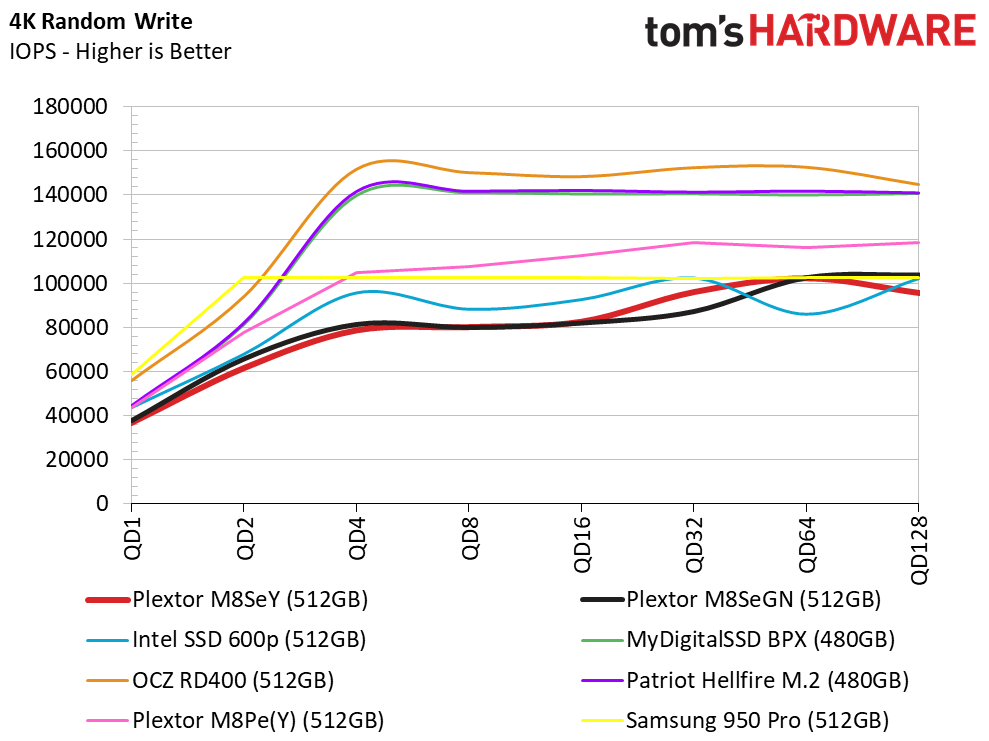
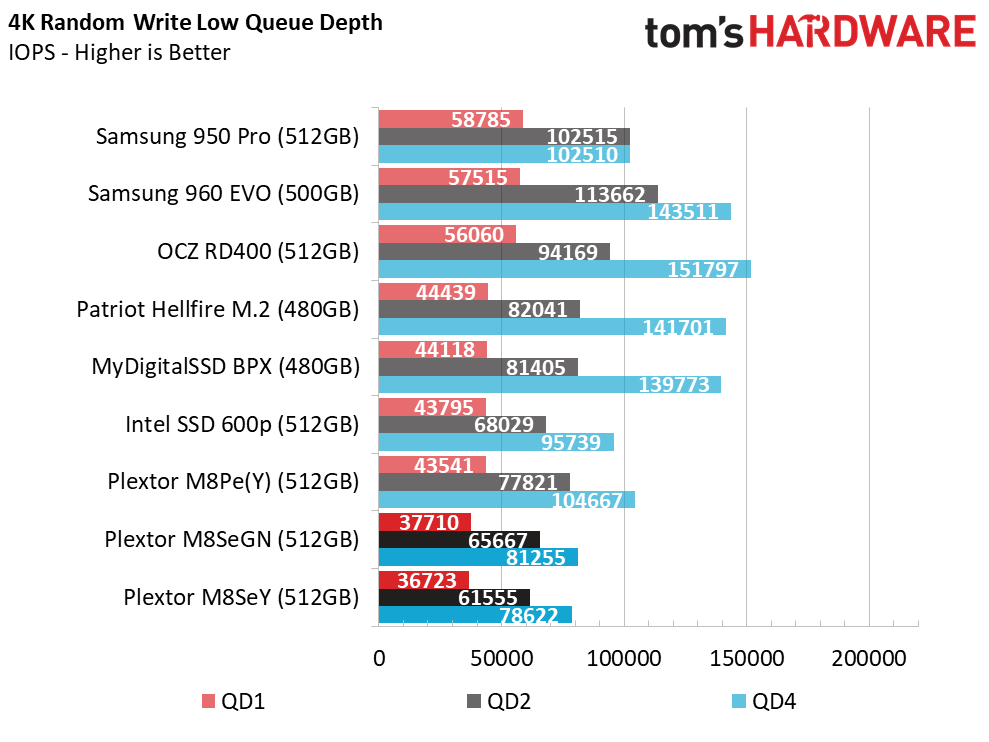
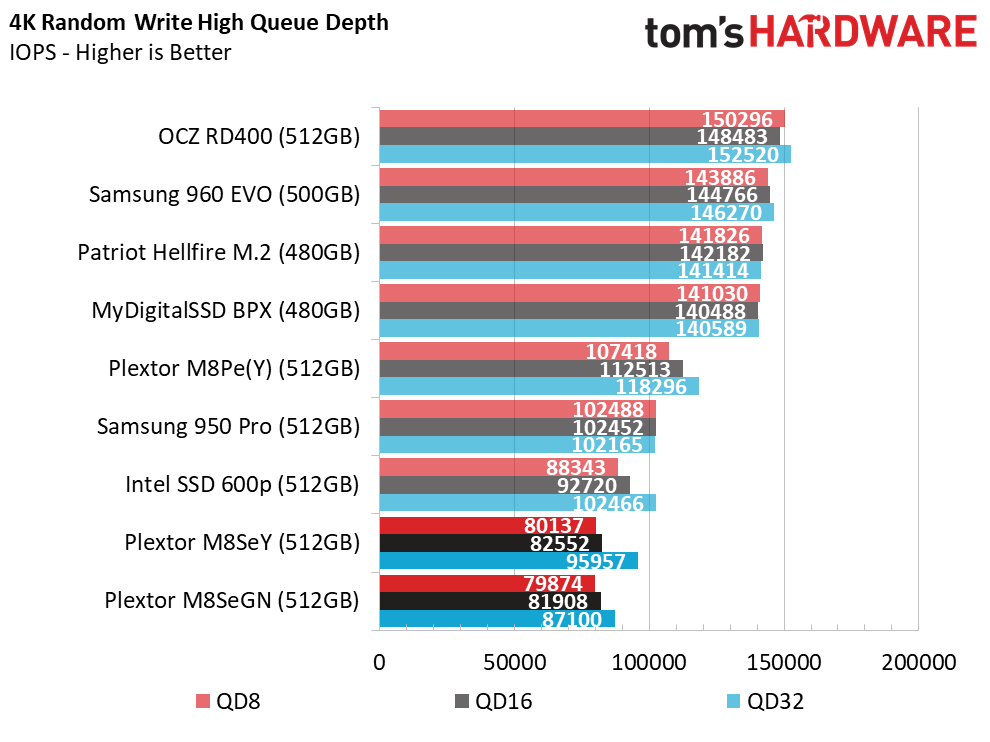
Planar TLC NAND is long in the tooth, and 3D NAND is on the horizon. Toshiba and Micron have struggled to keep pace with Samsung's V-NAND technology. The consumer market is moving to TLC NAND for consumer SSDs, and we expect the M8Se to be the last big-name release with planar NAND. The random write performance chart reveals why the aging technology has come under fire. Managing three bits per cell reduces random write performance.
80 Percent Mixed Sequential Workload
We describe our mixed workload testing in detail here and describe our steady state tests here.
The low write performance, along with the underpowered controller, results in low mixed workload performance. This is exactly what we observed in the 1TB product class.
80 Percent Mixed Random Workload
The mixed random performance results show a slightly better outlook for the M8Se, but the performance is still down compared to the M8Pe, RD400, and Samsung 950 Pro.
Sequential Steady-State

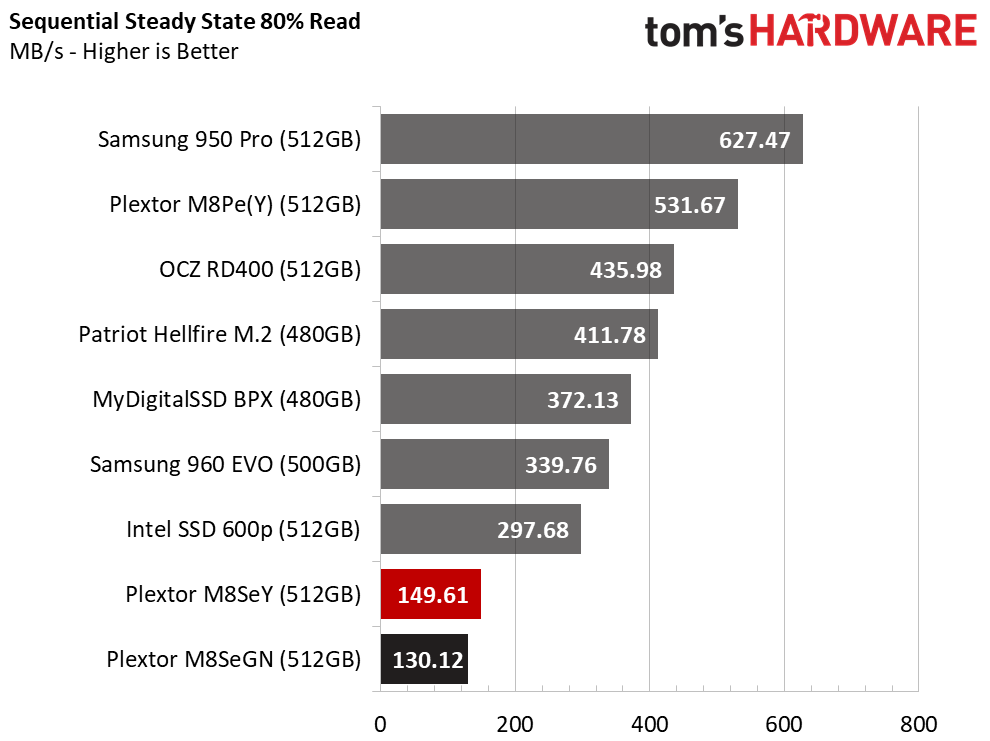
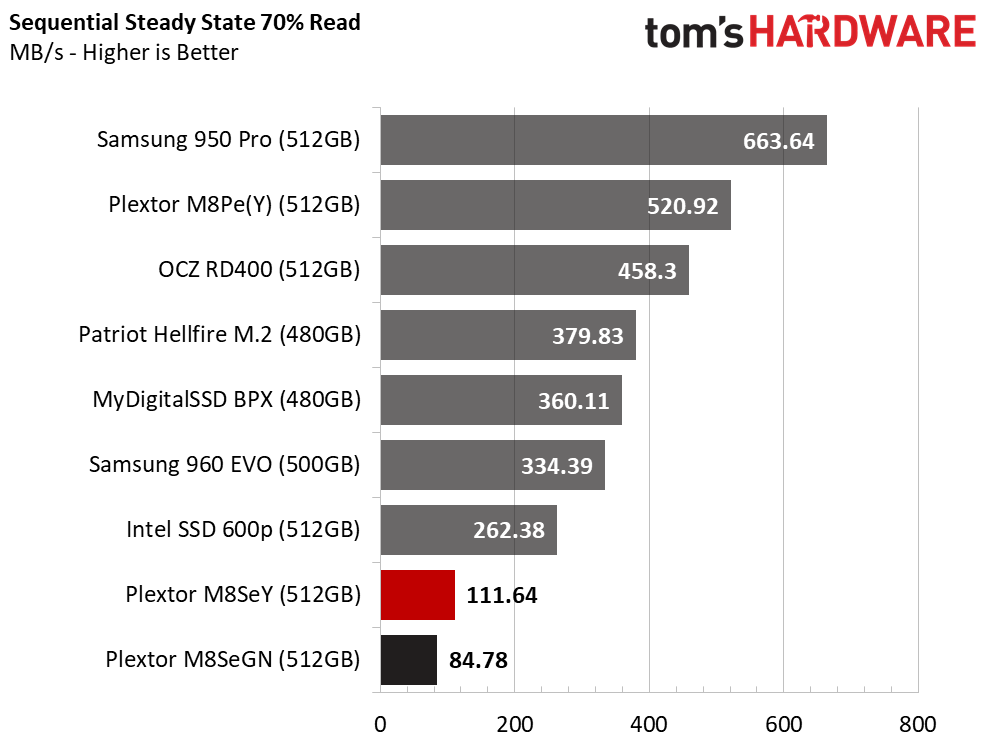
The M8Se has the weakest steady-state performance we've seen in a long time. We were shocked after the first three tries with this test. We realized the results were accurate after the fourth ten-hour test. The M8Se could recover after some additional firmware optimization that changes the priority of background activity. We expect to see some changes for the TLC-based drive in the future.
Random Steady-State

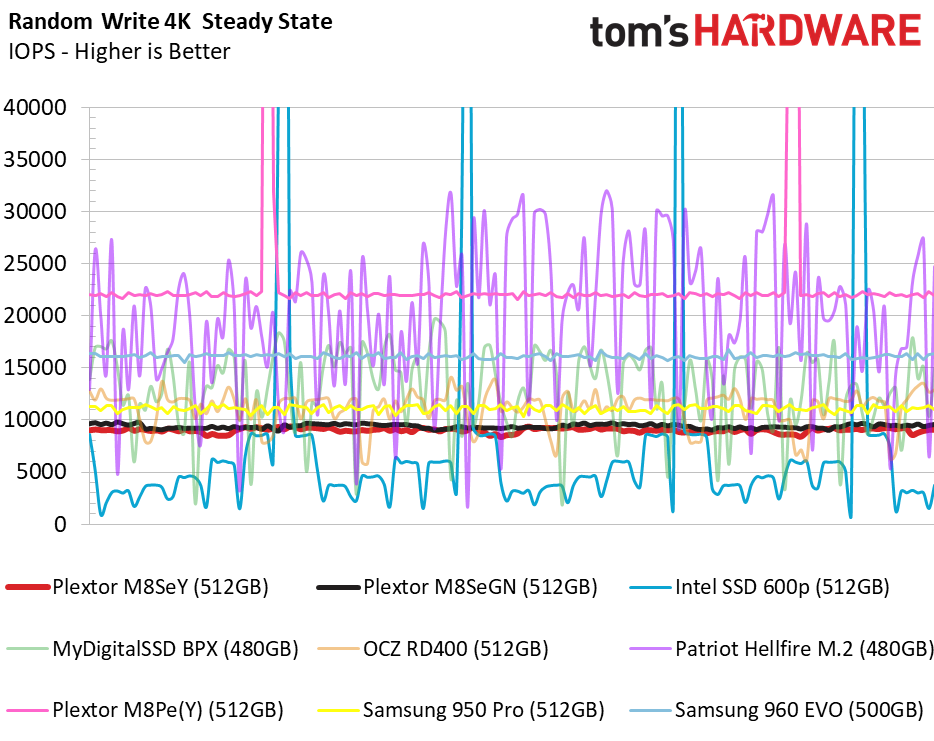
Given the other issues, we're still perplexed by the M8Se's poor random steady-state consistency. Striking the delicate balance between foreground and background duties is difficult due to the limited number of processor clock cycles. The drive could be impressive if Plextor increased the sequential throughput with a firmware update.
PCMark 8 Real-World Software Performance
For details on our real-world software performance testing, please click here.
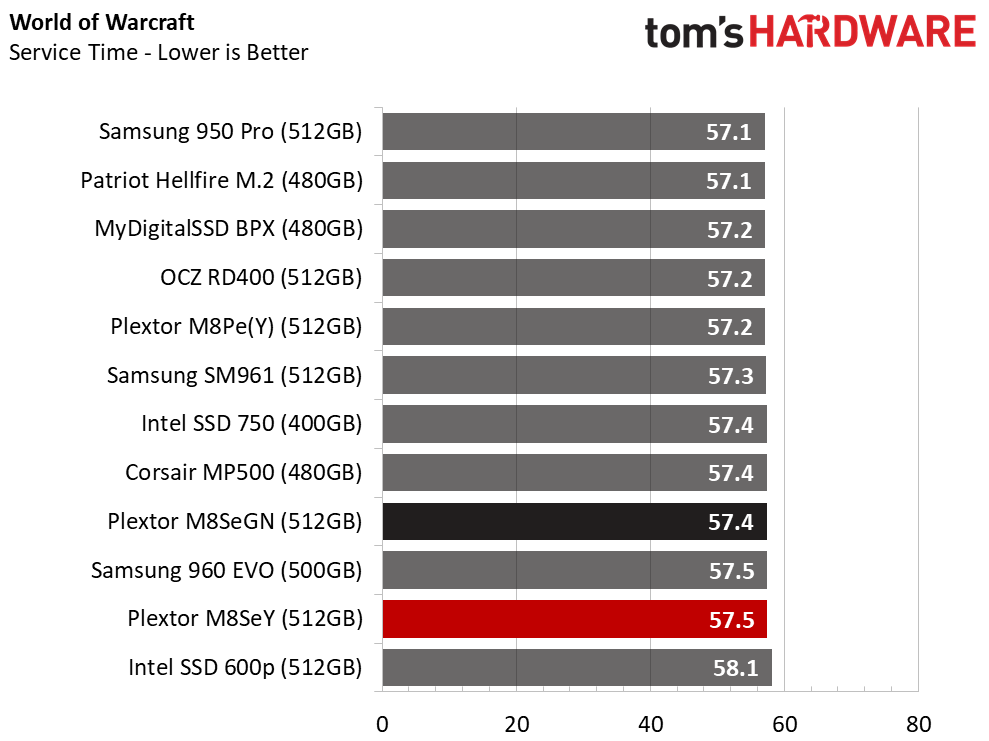
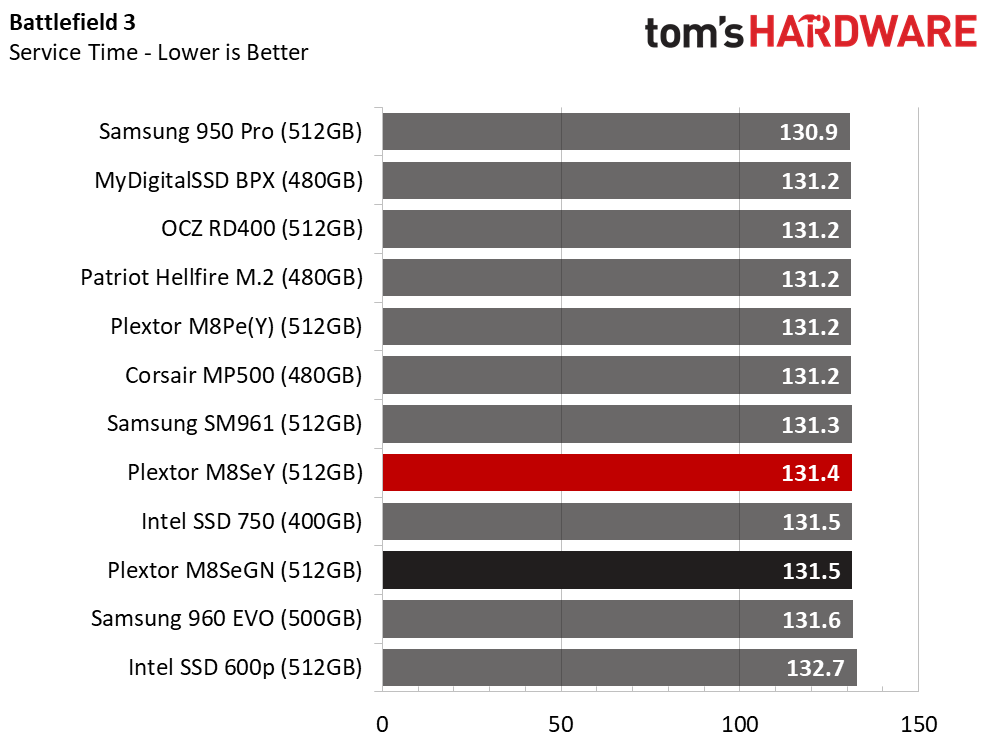
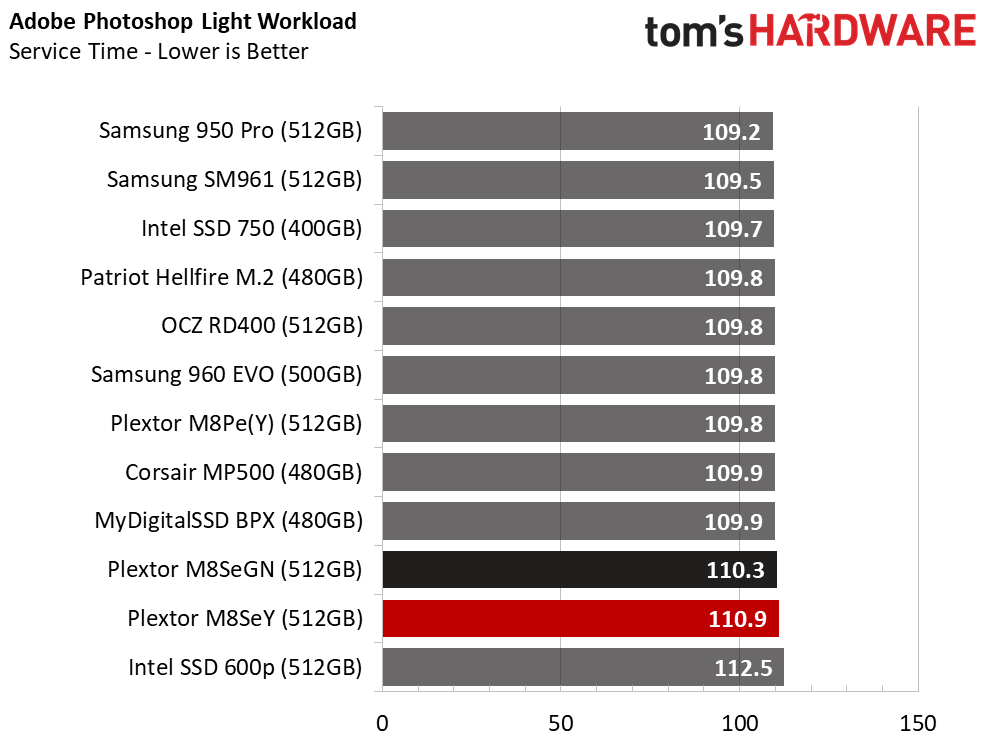
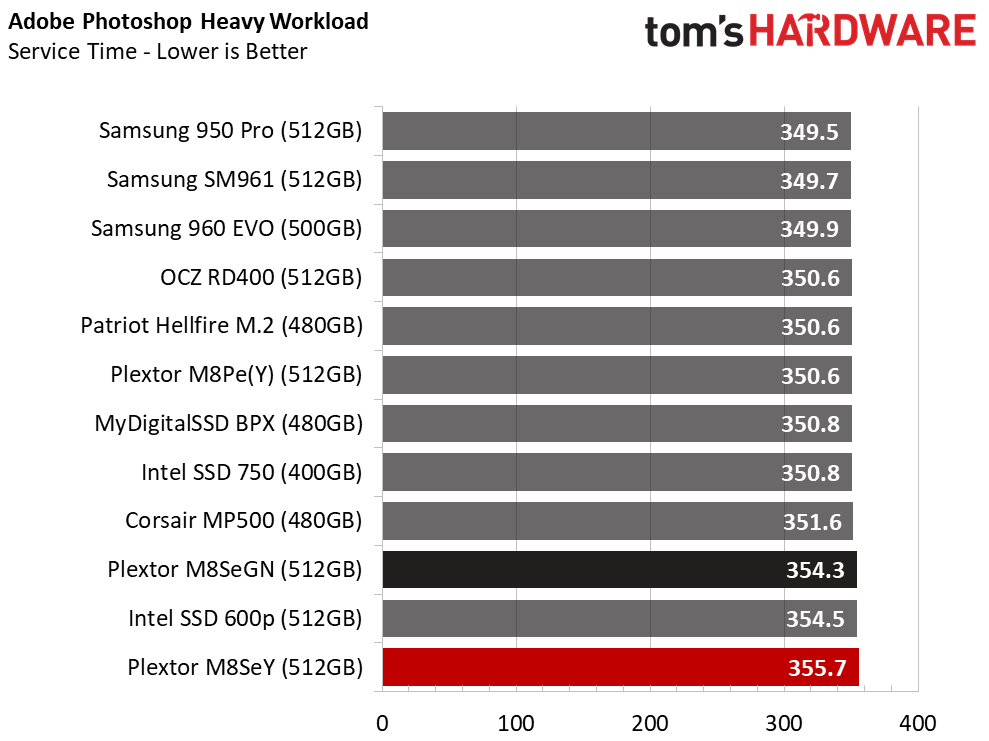


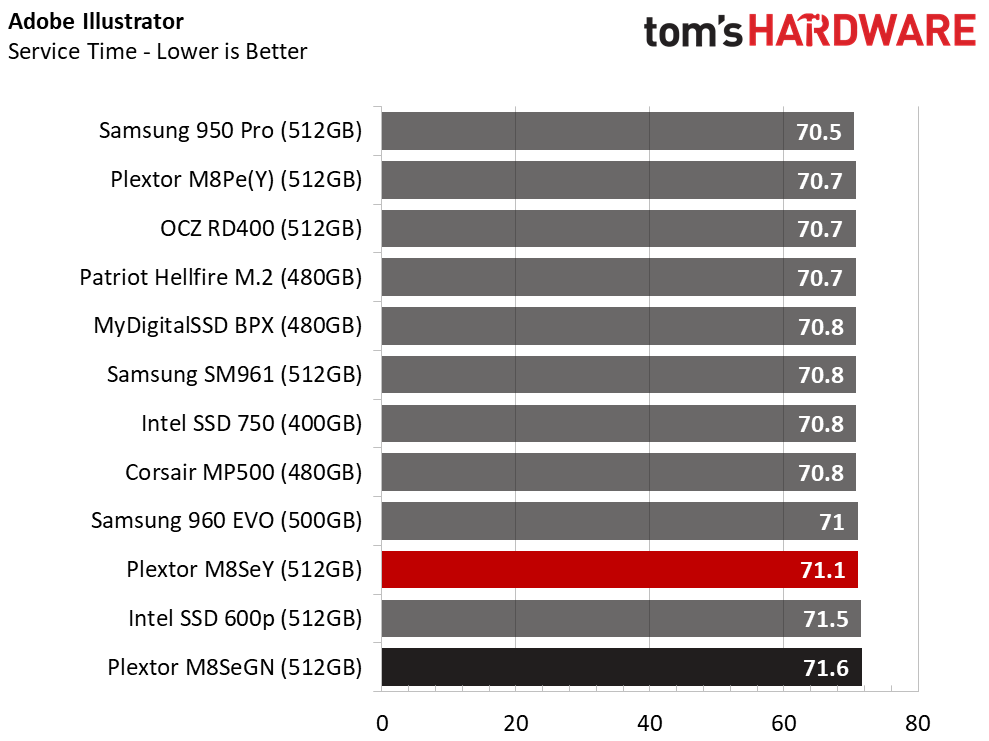
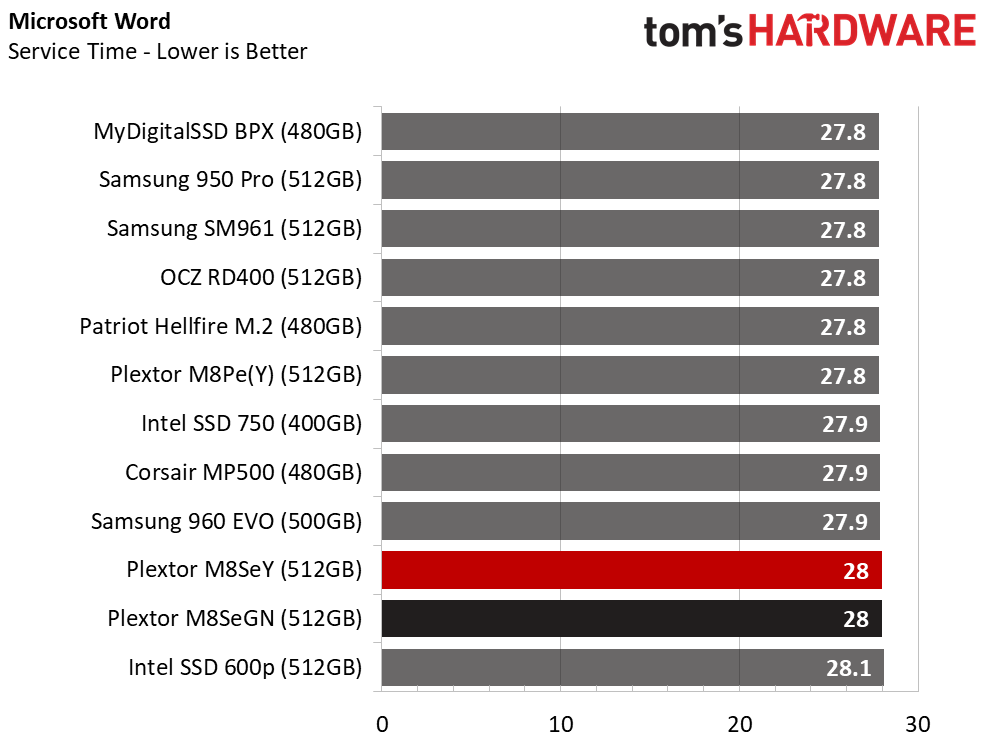


The Plextor M8Se 512GB variants are a step up from the Intel 600p, but they don't quite match the performance of MLC-based products. On the one hand, this series would make an excellent low-cost alternative to the 600p that we would pay a little more for. On the other hand, the M8Se is expensive for what it is, and the performance doesn't justify the high asking price.
Application Storage Bandwidth
The heatsink-less M8Se comes to market with a $240 price tag. That's a full $20 more than the Samsung 960 EVO 500GB. The drive is also $40 more than the popular value-centric MyDigitalSSD BPX 480GB. Plextor dove into the river head first, but it didn't check the current beforehand.
PCMark 8 Advanced Workload Performance
To learn how we test advanced workload performance, please click here.
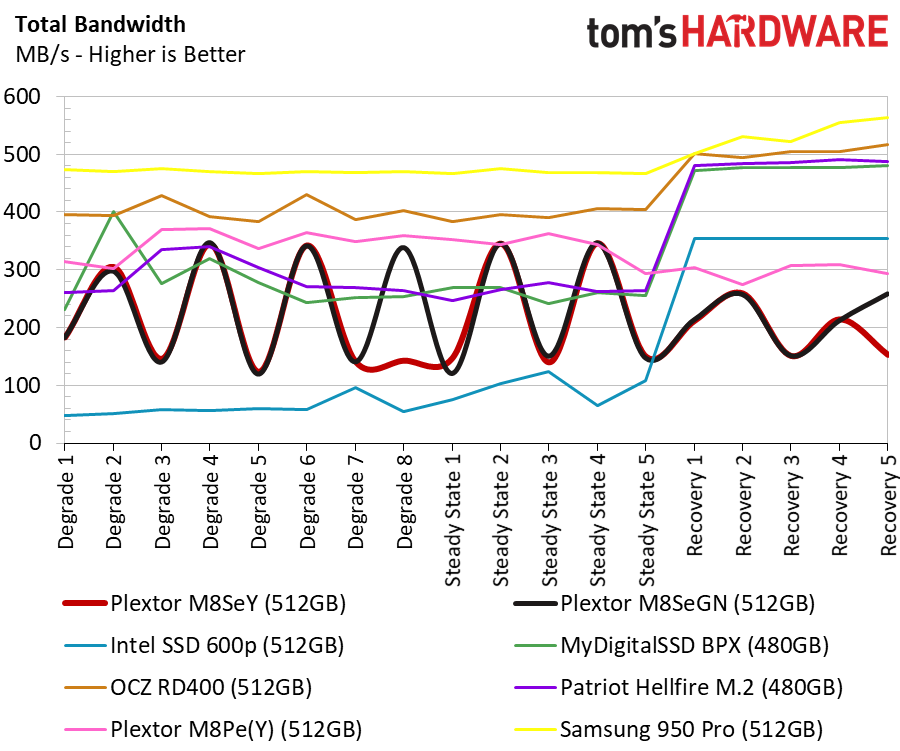
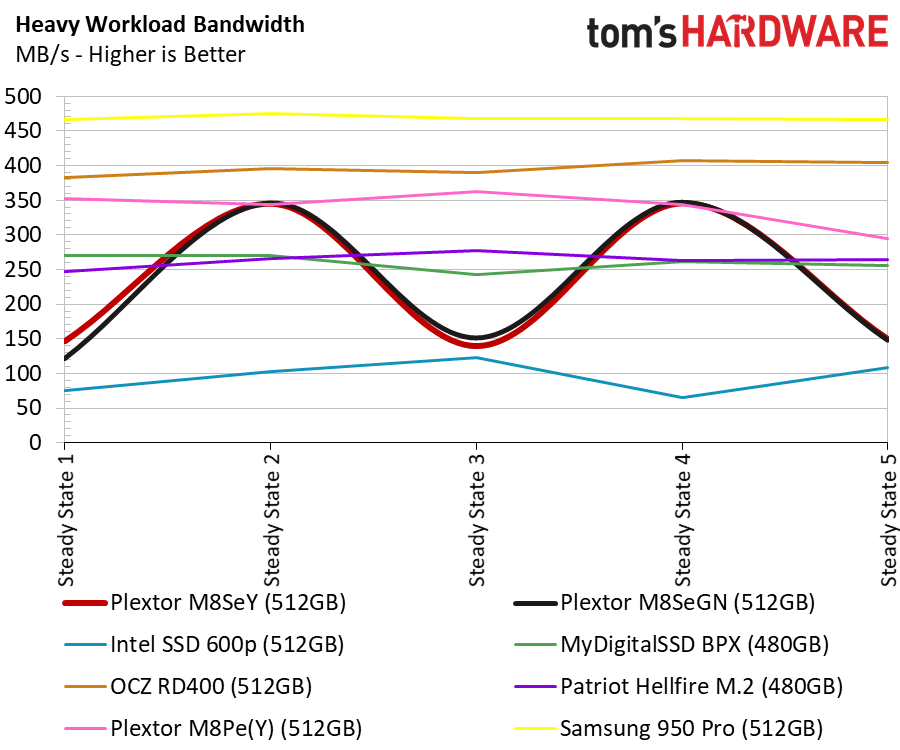
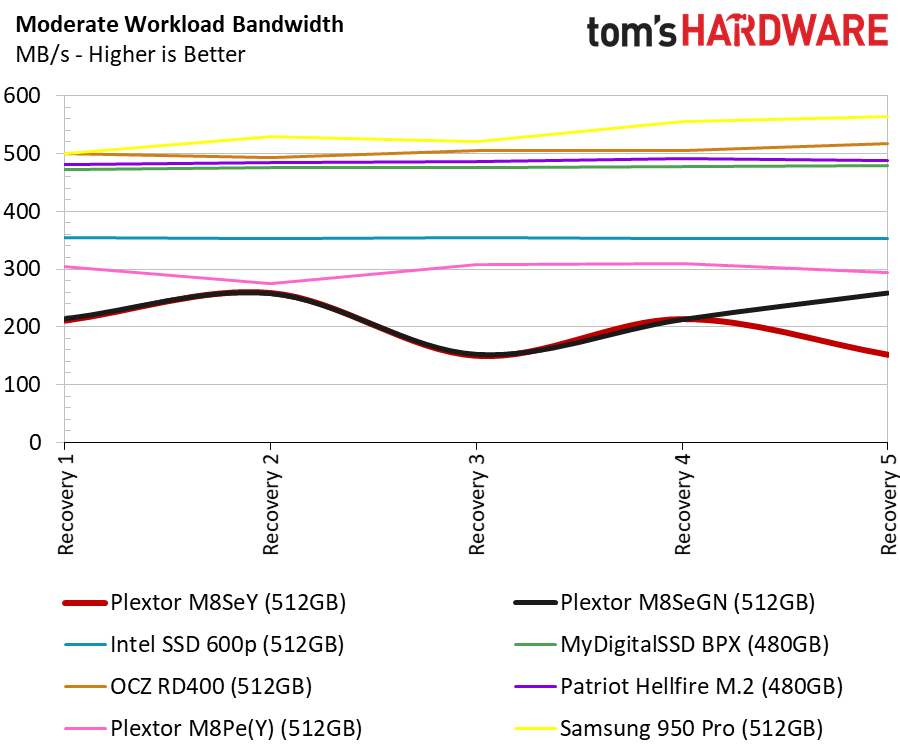
The inconsistent application performance we observed in the larger capacities carries over to the M8Se 512GB. Both drives exhibit the same wavy performance trend. That makes it unlikely that it's the result of thermal throttling. I would say this is the strangest abnormality we've recorded in this test. It's almost a certainty that we see issues with background activity management. Oddly, inconsistency is the only consistent attribute.
Total Service Time

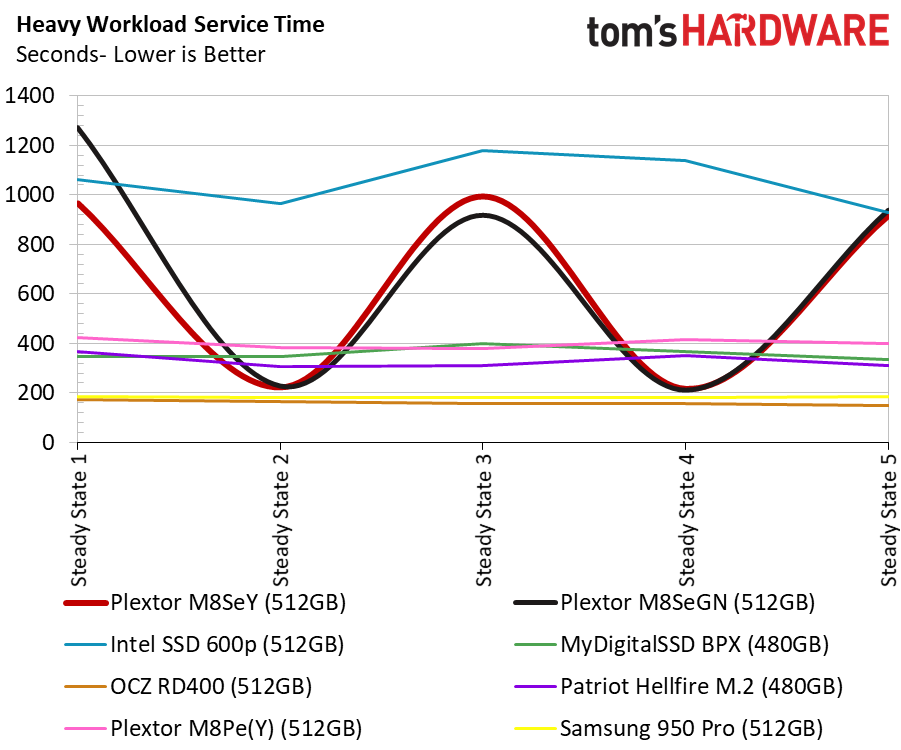

The inconsistency makes it difficult to analyze, score, or even take the test result seriously. It may be easier to just look past the 512GB M8Se given the high price and consistency issues.
Disk Busy Time
The inconsistent performance reemerges in the disk busy time test. That confirms the latency inconsistency is persistent during heavier workloads, so it's not just a brief system hang.
Responsiveness Test
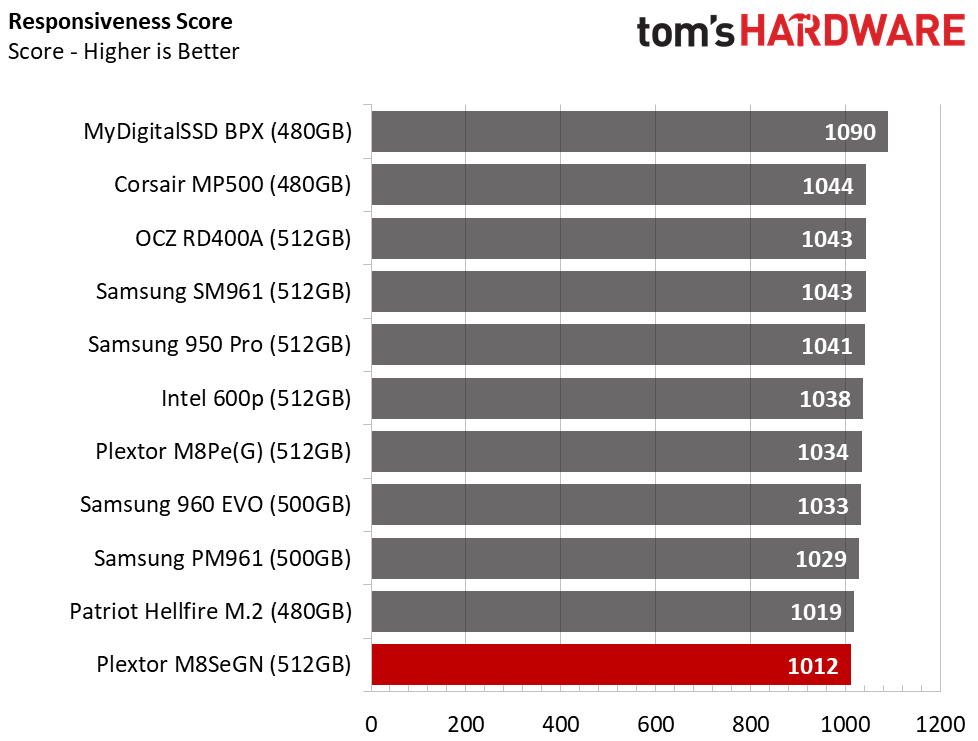

The M8Se delivers a better user experience than most SATA SSDs. We measure system responsiveness with real-world software running on a Lenovo Y700-17 gaming notebook that supports both SATA and NVMe SSDs. The BAPco SYSmark series has been with us for over a decade, but we use the latest 2014 SE version.
Notebook Battery Life
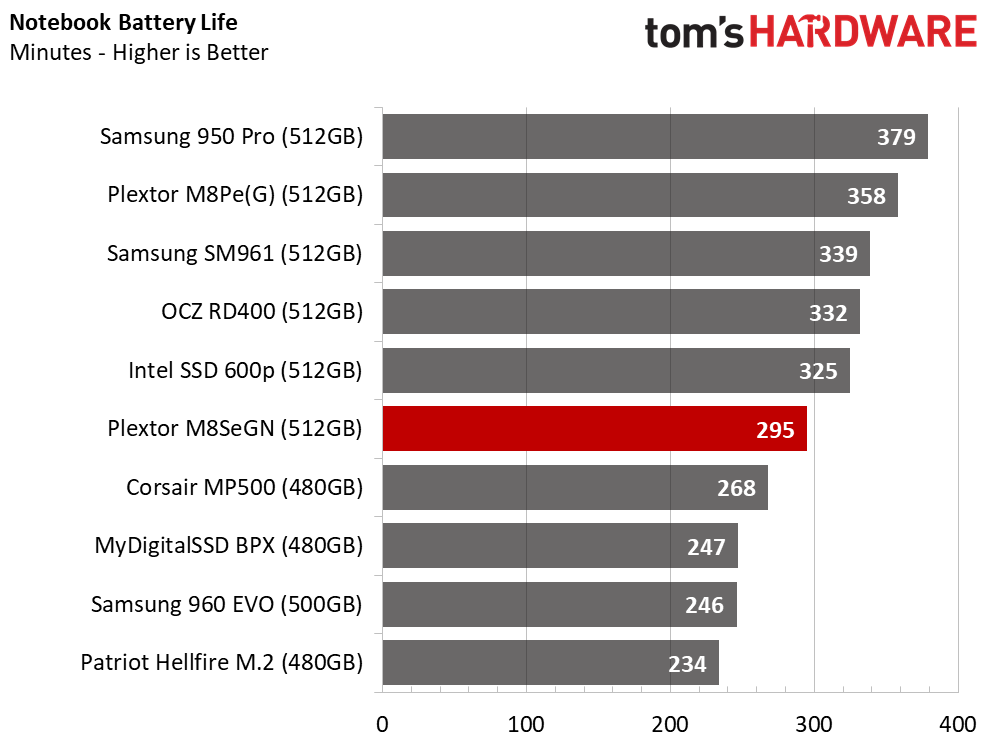
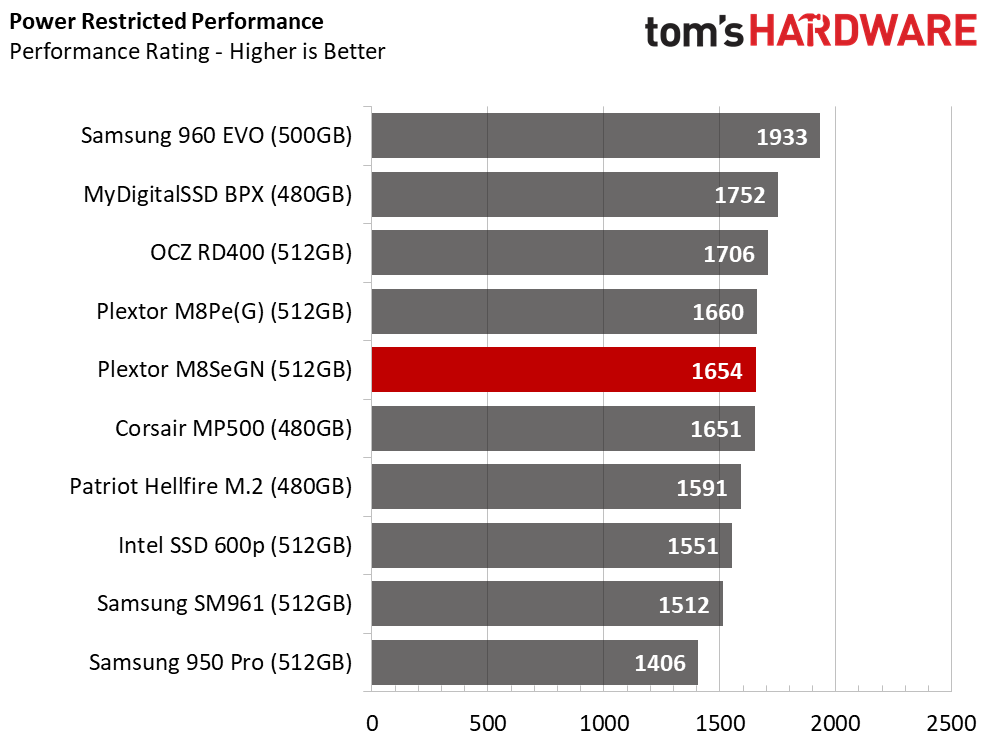
The M8SeGN 512GB delivers the same 295 minutes of battery life in our Lenovo Y700-17 as the 1TB version. We gain a better understanding of where this product sits in the ecosystem because there are more devices in this capacity class. There are better choices available for notebook use when you run rely heavily on battery power, but you could easily choose a cheaper alternative that doesn't perform as well as the M8Se.
MORE: Best SSDs
MORE: How We Test HDDs And SSDs
MORE: All SSD Content

Chris Ramseyer was a senior contributing editor for Tom's Hardware. He tested and reviewed consumer storage.
-
AgentLozen This is really disappointing. I've held Plextor in high regard for the last few years so it's a shame this thing is around to soil it's reputation.Reply
The review indicates that it's professional SSD still performs quite well. Maybe Plextor never intended for this new drive to win any awards.
Good review. -
derekullo You’re not quite Samsung enough.Reply
You’re semi-Samsung.
You’re quasi-Samsung.
You’re the margarine of Samsung.
You’re the Diet Coke of Samsung just one calorie, not Samsung enough.
In all fairness, Plextor is just playing their part in the race to the bottom. -
cinergy Why does shamesung continue to dominate? I don't want to buy their products but I don't see much choice...Reply -
derekullo Because they have the fastest most power efficient NAND due to being able to make it themself.Reply
Most other companies order the NAND from a 3rd party supplier and add their own custom firmware for flavor. -
daglesj Does 'Plextor' actually make anything themselves? I mean all they did 20 years ago was flash upgraded firmware on other peoples optical drives and change the front bezel.Reply -
Faslane1966 I dunno. Plextor hasn't been the greatest name in tech for a while now (not to be confused with God awful Maxtor) but I'd still be wary of these until more reviews and tests come out. Just me personally. They haven't been in the SSD business long at all if ever that I've seen.Reply -
none12345 Man they went from the m8pe being on top in some benchmarks and competitive in others to the bottom with the m8se. WTF did they do....Reply
TLC garbage is not good for consumers!
On top of that the se going for $290 for 512gb nvme version on newegg as of this post. Last month i got a m8pe for $215(tho this was a sale price). $75 more for less performance ouch.
Ive had good luck with plextor ssds the last few years. Never a problem, which is why i got a m8pe over a samsung 960. But, i wouldnt touch the m8se. -
HERETIC-1 To DAGLESJ and FASLANE-Reply
To the best of my knowledge PLEXTOR is now owned by Lite-on.
So expect some high quality gems (Plextor) and some general
purpose drives designed for OEM market (Lite-on) -
gasaraki TLC is garbage, stop push these garbage on to us. SSDs have gotten worst and worst over the years. Now they want us to use QLC soon. Over my dead body. I'll hold on to my MLC BPX till I die.Reply
